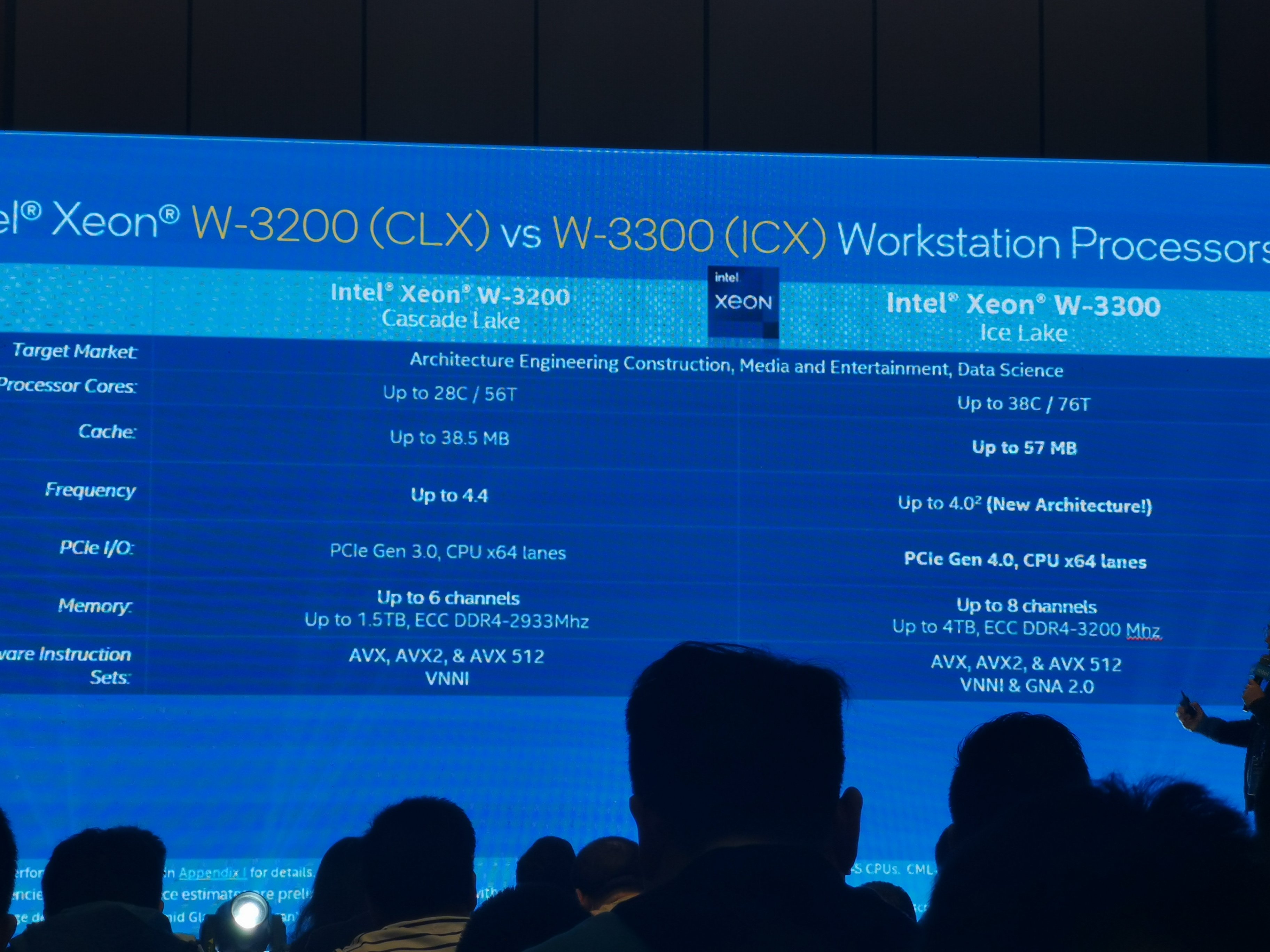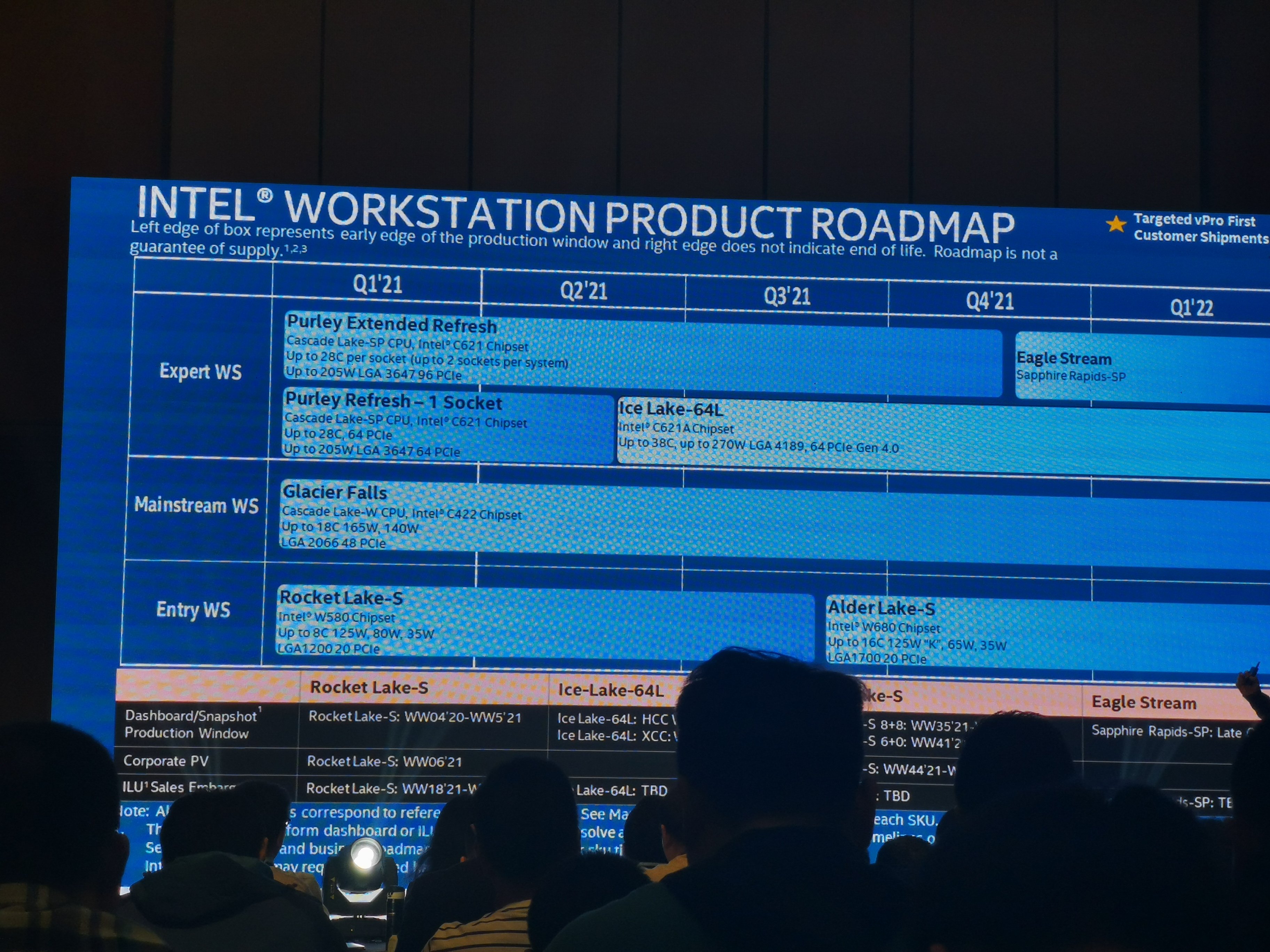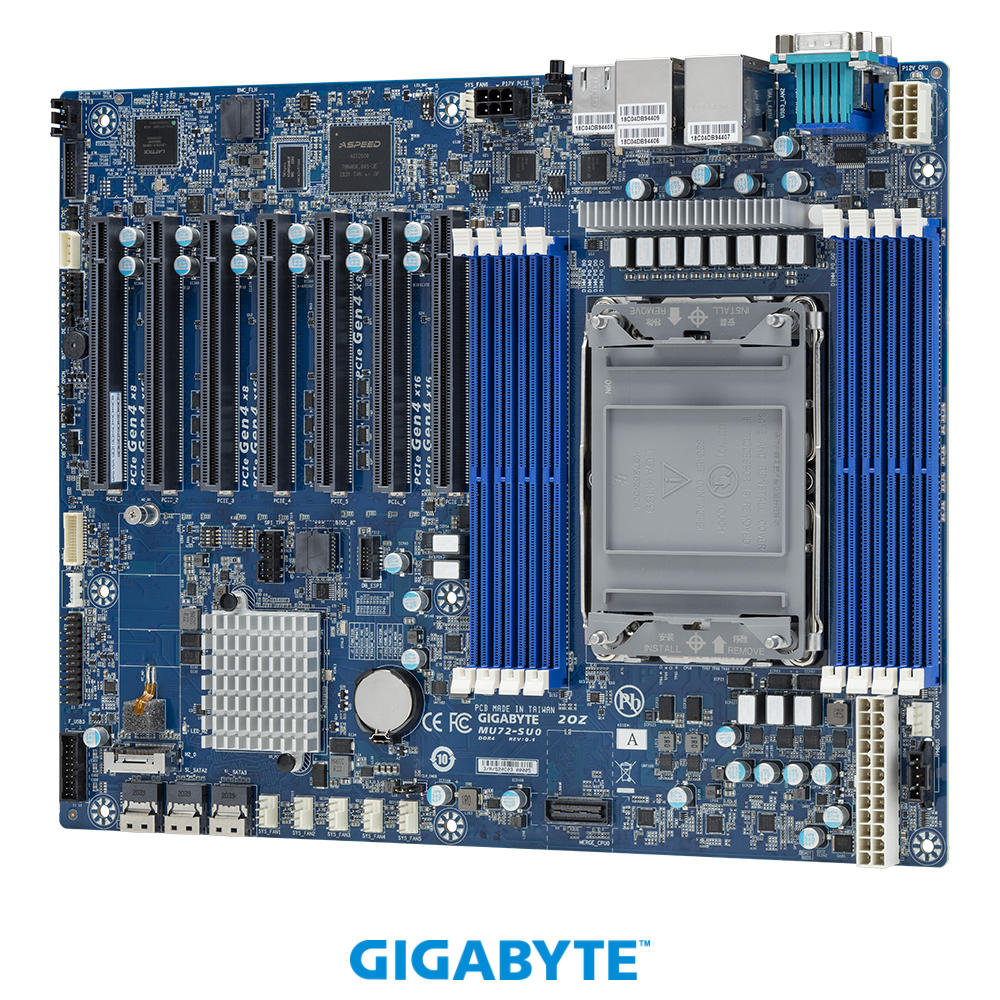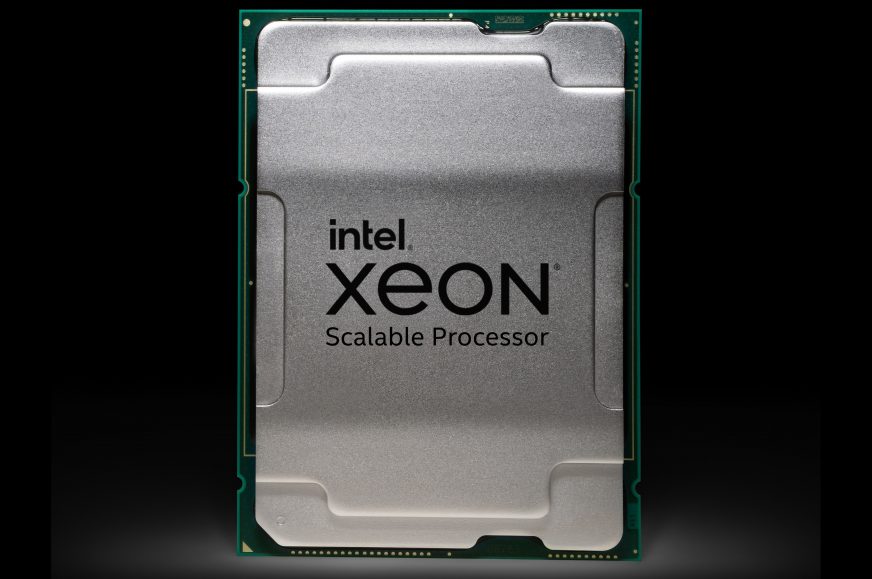Intel’s workstation roadmap leaked
Intel has finally released desktop processors with a new architecture (Rocket Lake), which is also used in 10nm laptop and server CPUs. But high-end desktop has been forgotten and is still server by the old Skylake. But a roadmap leak now shows that Intel is planning something new: 10nm Xeon W-3300 with 38 Ice Lake cores for workstations. They should even be released pretty soon, which is what the roadmap also says about desktop Alder Lake.
Over the past year, Intel has virtually ceded the field of high-end desktop processors to AMD’s Threadripper 3000. The Cascade Lake-X that is still manufactured on 14nm node can compete on price, but even 16-core Ryzen processors for the AM4 socket have put a lot of pressure on it in terms of CPU performance.
Unfortunately, there is still no sign of successor to the Intel X299 platform for high-end desktop, but it turns out that Intel is actually preparing some answer to Threadripper. A few days ago, there was a leak indicating that while enthusiast segment Ice Lake-X is not planned, there is at least a workstation version, i.e. Xeon W, being prepared. Although it is not aimed at enthusiasts, it could finally be an alternative for business and pro user, as Threadripper 3000 is quite expensive and Threadripper 5000 will likely be as well, making it kind of comparable to the Xeon W line.
Yesterday, a roadmap was leaked and it confirms Ice Lake processors for the desktop workstation segment. But it’s also interesting in the context of regular desktops, because it says Alder Lake processors for desktop – i.e. Intel’s expected new product, which will bring the new LGA 1700 platform, DDR5 and likely much greater competitive position, if not even performance lead against AMD – could be released very soon, hopefully in September.
38-core processors for (expensive) workstations
The visuals show that the “desktop” version of Ice Lake server chips will take on the role of successor to the Xeon W-3200 processors. Those are chips based on the server Cascade Lake-SP die for most powerful workstations, using 6-channel memory and the “full-fat” LGA 3647 socket, with up to 28 cores.
Intel will now take the new Ice Lake server processors to turn them into Xeon W-3300 for the segment of more expensive workstations . They will use the LGA 4189 socket, which means 8-channel DDR-3200 memory with ECC (with support for capacity up to 4 TB) and will also finally support PCI Express 4.0 (up to 64 lanes), which is currently exclusive feature of Threadripper and Ryzen.

These processors will have a large number number of cores, but not the maximum number Intel is capable off – while the server version of the Ice Lake (3rd gen Xeon Scalable processors) offers up to 40 cores, the Xeon W-3300 will max out with 38 cores (76 threads). Thanks to the 10nm process, it will achieve better efficiency compared to old 14nm processors and thanks to that it should significantly increase the performance in multi-threaded tasks. However, Intel isn’t likely to match the performance of 64-core AMD Ryzen Threadripper 3990X outside of applications able to strongly benefit from AVX-512. Besides the core count, Intel is also going to be held back by the process node used still being the first generation of 10nm technology that achieves lower clock speed and efficiency than the improved SuperFin process that didn’t make it into Ice Lake chips. The TDP is going to be up to 270 W for the highest-performance models, which is comparable to the 280 W TDP of current Threadrippers.
Plans: WS Ice Lake in this quarter, Sapphire Rapids in Q4, Alder Lake in September?
In addition to the specifications of the processors, a roadmap’s also been leaked, according to which these processors could go into production as early as this quarter (perhaps in June). The question is however whether this is referring to actual launch dates. The same document also shows that brand new Sapphire Rapids processors for servers (and perhaps high-end workstations too, but only the most demanding 2S systems) could be available at the end of this year, around November.

Perhaps even more interesting is the last line denoted “Entry Workstation”, which shows Alder Lake-S, i.e. big.LITTLE processors with a new architecture and up to 16 cores (on a 10nm Enhanced SuperFin process, thanks to which they could probably run at clock speed exceeding 5 GHz). According to this roadmap, this CPUs based on desktop chips for the LGA 1700 socket should go into production or launch to market in the third quarter of this year, maybe as soon as September, according to the slide. These processors aren’t the same thing as the consumer desktop version, we are talking Xeon W-1400 which is based on the same platform, but it means the desktop version for regular PCs should be released sooner or simultaneously at worst.
The roadmap is likely old
Due the audience’s heads in the photos, we sadly can’t discern information about the working weeks during which the processors should go into production and market. But that’s not that imporant in the end, the main caveat here is something else: whether this roadmap is up to date. If you look at lower left corner, this document alleges that the launch of Rocket Lake processors for the desktop was supposed to be in the early 2021 or even before the end of year 2020. But as we now this has not happened. At some point during the beginning of Q4 2020 Intel is said to have postponed the release and after that the desktop version went to market only on March 30. And the Xeon W-1300 version hasn’t been released at all so far (model names and specs have begun to leak hower, so we know it is in fact coming).
The document is probably a somewhat older, given how the marked left margin does not correspond to the actual release. Which also casts a shadow of doubt over whether Alder Lake processors can really be expected in September (and Sapphire Rapids later this year). It is very much possible that now their planned release has also been postponed by a few months just as Rocket Lake has been, because these things tend to have knock-on effect on introduction dates of follow-up products.
However, there is no reason doubt that sooner or later, the Ice Lake workstation processors themselves will come to market, because one model (Xeon W-3335 for example) has already been leaked in the PugetBench benchmark database.
#IceLake Workstation:#Intel #Xeon W-3335 @ 3.40GHz https://t.co/o9xsVSYXlr
Probably similar to 12c/24t #CascadeLake Xeon W-3235 @3.30GHz:https://t.co/39aZcJT0Ht
Gigabyte LGA4189 MB:https://t.co/rctc7QfRnB
Thx, @BenchLeaks!https://t.co/r62qJz1IYj— InstLatX64 (@InstLatX64) April 13, 2021
Motherboards for these processors also seem to be coming, this processor has been tested on the Gigabyte MU-72-SU0 with socket 4189 and Intel C621A chipset. However, this board is likely mostly intended for use with the purely server-based Xeon Gold/Platinum Ice Lake processors. It is likely that there will also be models, which will more specifically target the W-series processors and workstations.

So far no X299 successor
It is a pity that this roadmap does not show the successors to the W-2200 Xeon processors for the LGA 2066 socket, which is a cheaper tier of workstation processors (below the W-3000 line) based on the X299 platform. Therefore, Intel seems to not be planning any version of Ice Lake processors for high-end enthusiast desktop. Intel will keep offering only obsolete 14nm processors in this segment that offers CPUs and motherboards that are more pricy, but still relatively affordable.
Sources: HXL, VideoCardz
Translated, original text by:
Jan Olšan, editor for Cnews.cz








